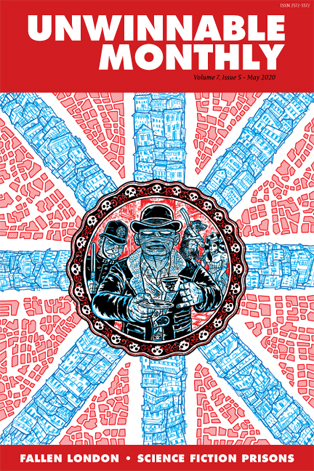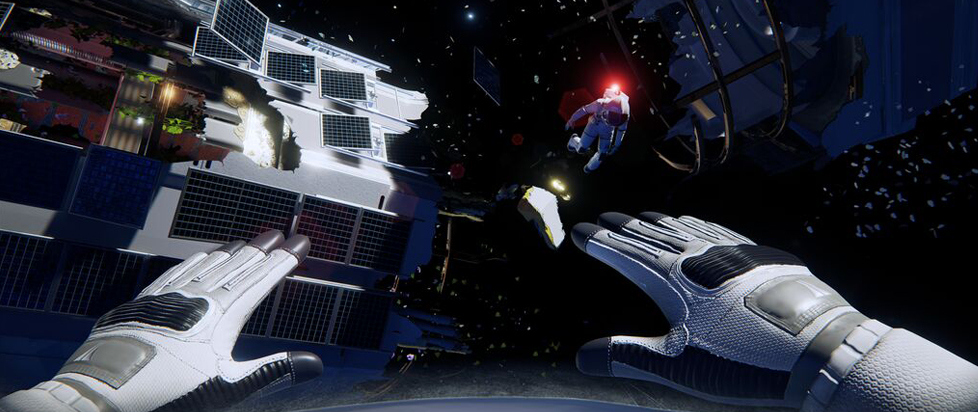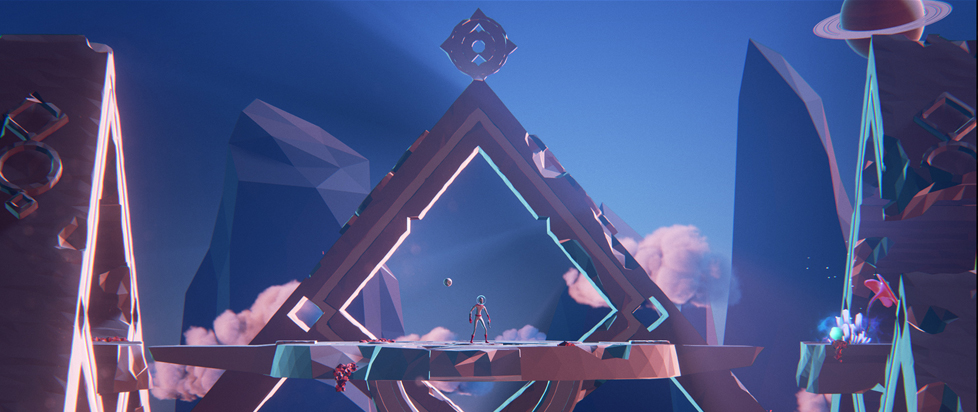
Gaming 21 Times Slower
 This column is reprinted from Unwinnable Monthly #127. If you like what you see, grab the magazine for less than ten dollars, or subscribe and get all future magazines for half price.
This column is reprinted from Unwinnable Monthly #127. If you like what you see, grab the magazine for less than ten dollars, or subscribe and get all future magazines for half price.
———
A videogame deep soak.
———
If you read my column in last month’s Unwinnable Monthly, you might remember that I burned my laptop to ashes slightly-faster-than-normal-running Broforce. All I’ve had since then for PC gaming is the machine I’m typing on now, my girlfriend’s parents’ old netbook, a miracle of science and technology (i.e. it’s so old it should be dead already, and so slow that I can’t always tell the difference anyway).
I’m grateful to have the laptop, but can it run Crysis? No. No, it cannot run Crysis. Nor can it run Broforce or Puddle Knights, the cute-looking puzzle game I was hoping to write about this month. MS Paint is an option, but opening a new tab in my browser causes steam to shoot out the fan vents and the cogs inside the CPU to whine and grind to a halt until I smack the computer with the back of a broom.
I decided to see what games do actually run on it. Is there anything from after 2012? After 2007? Post-Space Wars? My only guidelines were that the games should test the machine and be potentially worth playing. Beyond that, anything chosen at random from my Steam library was a legitimate target.
For the sake of reference, these are the system’s vital statistics:
- MS Windows 7 Starter
- Intel Atom CPU N2600 1.6GHz
- 2GB RAM
- A 280 GB HDD, more than half of which is somehow already occupied.
- A graphics card I think might actually be made out of card.
I have no idea what most of those numbers mean, except that they’re lower than I would like. According to one CPU benchmarking site, the CPU is 21 times slower than one of the better common examples on the market right now.
Games have 30 minutes to impress me. If it takes that long to get them running, then that’s a fail.
Game 1: Broforce (2014)

The gist of the game: Implausible but true: Broforce is my GOAT. A fun and frantic sandwich of run-and-gun platforming and 80s action movie references, buttered all over with a thick layer of satire aimed at Western imperialism.
Does it work?: No. Not at all. I tried Broforce before I started writing this, and then I tried it again when I had. I closed down my word processor. I closed down my browser, my music player and anything else I could find that didn’t seem 100% essential to the running of Windows 7. When the “Made with Unity” splash screen didn’t immediately appear to gladden my heart, I got out a book I’ve been reading, Max Gladstone’s Three Parts Dead, and busied myself with that instead. Five minutes later, two and a half pages in, and it’s still loading. Ten minutes, four pages and the making of a very large cup of tea, and I got an error message.
I tried it two more times after that. Attempts three and four were no better.
The experience: Disappointing, but a relief for my girlfriend’s parents, though they’ll never know how close their netbook flew to the danger zone.
The likelihood I’ll go back: The sun not rising tomorrow morning and a giraffe birthing a fully grown John Oliver are two events that are more likely than me never playing Broforce again.
Game 2: Minit (2018)

The gist of the game: Minit takes the corest of videogames’ core mechanics and makes it the star of the show: the player is cursed to die and respawn every minute. Any knowledge or objects they collect in those 60 seconds can be used to get further in the next. It’s the most ingenious of retro-styled adventures.
Does it work?: It seemed like a great idea. I had high hopes. It loaded incredibly fast as well, raising up those hopes even farther into the sky. They remained up there for not more than a few seconds before plunging to earth and cratering in an unsightly mess. I could load the first splash screen but go no farther.
The experience: N/A
The likelihood I’ll go back: It’s one I’ve played before, so I know how great it is. That being said, unless I’m stuck with a rubbish laptop that’s slightly better than this one some time in the future, I’m not sure what reason I have to run through it again. Everyone should play it at least once though.
Game 3: Hexcells (2014)

The gist of the game: It’s a puzzle game and nothing else. There’s no narrative. No characters. Just hexes that have to be either shaded in or destroyed, according to the numbers in the hexes that surround them. It’s simple, pure and utterly consuming.
Does it work?: Ok. Maybe the failures of Games 1 and 2 affected me more than I realized because I couldn’t have been much less ambitious than I was with Hexcells. It loaded in less time than it has taken to write this sentence, and there were no issues with the game’s spartan graphics.
The experience: Joyful puzzling, even if the levels I played in the allotted 30 minutes were a bit easy. Hexcells starts off slowly and builds up in intensity – and if I remember right from playing this years ago, it’s not until the later games in the series that things really start to get fiendish.
The likelihood I’ll go back: Oh yeah. This was just a tester to see if I remembered any of the solutions to the puzzles. I don’t, so I can safely have another go. It’ll be either this or Jelly No Puzzle, the solitary serious competitor I know of for the title of greatest puzzle game of all time. If you’re looking for a free puzzle game to play on a netbook over a lunch break, you could do no better than Jelly No Puzzle.
Game 4: The Bridge (2013)

The gist of the game: A monochrome 2-D logic puzzle game in which players can walk their protagonist left or right and rotate the M.C. Escher-inspired levels around.
Does it work?: A long load – a leisurely seven-page read this time – but it worked in the end and worked surprisingly smoothly at that, considering how lovely its graphics are and the physics involved in the puzzles.
The experience: Played an indie game from around the start of the 2010s? Then you’ll find something nostalgic about The Bridge. The graphics are pretty but very reminiscent of Braid and so is the game’s self-conscious intellectualism. The mechanics might put you in mind of a slightly too-slow And Yet It Moves as well, though the M.C. Escher twist is very pleasing.
The likelihood I’ll go back: Maybe? I’m glad I finally installed this. The first 30 minutes of the game didn’t throw anything original or very tricky at me, but they did promise greater satisfaction on down the road. Really, I’d like to find out what the developer did next. There’s a lot of promise here.
 Game 5: Audiosurf (2008)
Game 5: Audiosurf (2008)
The gist of the game: At first glance, it looks like a racing game, but really this is rhythm action with a debt to match-3 games. The game takes whatever mp3 you feed it and turns the sounds into a course for a Wipeout-style pointy hovercraft. Collect and match colored blocks for points.
Does it work?: I’ve definitely gone too far back in time. This is a pretty old game now, so maybe I shouldn’t be surprised that I had barely enough time to get through three pages of unexpectedly clever legal fantasy shenanigans before I went from my Steam library to a main menu. The levels loaded even faster, and when I figured out how to turn the graphics settings down, the game stopped stuttering enough that I could control my hovercraft.
The experience: Very playable. It’s action-packed, slightly hypnotic and the closest thing to a recent racing game that might work on a netbook or very old desktop. The slight clunkiness that the game was born with hasn’t gone away over the last ten years, but it hasn’t gotten any less charming either.
The likelihood I’ll go back: Whenever I manage to get some mp3s off my defunct laptop, this is going back on for a whirl.
Game 6: 2064: Read Only Memories (2015)

The gist of the game: 2064: Read Only Memories has a lot of gist. Before even the Prologue had started, I was expositioned out. It’s the future. It’s a bit dystopian and very cyberpunk. You’re a headphone-reviewing superstar journalist. Apparently someone’s friend has been kidnapped, only I didn’t get that far.
Does it work?: Yeah. The mouse jumps around the screen but not so much that it’s uncontrollable, and the game was only a page-long load, which was very easy to stomach. My single real issue was that I set the graphics quality too low on the Steam launch menu, and most of my 30 minutes was spent unsuccessfully attempting to change the graphics to something higher resolution.
The experience: As far as I can tell, the game should be a pleasure. Besides the slightly off-putting world-building it begins with, the one screen I saw of 2064: Read Only Memories was packed with (very small) detail and character. I met a cute little robot. I got two achievements in the first couple of minutes, which hit some kind of brain-reward system I didn’t even know I had. If the graphics resolution hadn’t made the text and game objects so tiny that they were really hard to read or click on, I might have enjoyed myself. It also seemed a bit too derivatively cyberpunk, dealing with the same kinds of questions that are built into something like Shadowrun, but for all I know 2064: Read Only Memories would have given me interesting new answers to those questions, if I could have read or seen them.
The likelihood I’ll go back: Ooh. Toughy. Not on this machine at least.
 Game 7: Downwell (2015)
Game 7: Downwell (2015)
The gist of the game: You jump down an unusually wide and deep well and have to shoot the creatures beneath you with the guns you for some reason wear on your shoes. That’s basically it. If you die, you start again and the well has changed. Or you can take the pacifist option, refuse to jump down and stand at the top of the well not doing anything ever again. The choice is yours.
Does it work?: Woof. Half a page load and smoother than whisked butter.
The experience: I didn’t play this back when it was the on-trend thing to do, and I really missed out. Downwell has managed to blend the mechanics of pinging faster and faster down a well, shooting ghosts and stomping on squids to reload gunboots into a game that’s rich, fun and compelling. I can imagine that the only way to improve the experience would be the social element of beating combos and hi-scores, finding upgrades, generating new war stories and sharing all of that with like-minded squid stompers. Plus Downwell is so lo-fi that the experience on my senile netbook is about the same as it would be on anything state of the art.
The likelihood I’ll go back: 100%. It’s intense, but I can still feel myself getting a little better every time I play. I also want to learn more of the story of GunLeg as he’s probably called. Was the gun attached to his feet at birth? Did it develop in the womb? Does it grow longer as he does? The only negative is that I’ve noticed this is the third game published by Devolver on my list. Maybe I need to detox.
Game 8: Dropsy (2015)

The gist of the game: Somehow Dropsy has an even more horrific backstory than GunLeg. Even more horrific than the meaning of the word dropsy, which, Google tells me, is “a condition characterized by an excess of watery fluid collecting in the cavities or tissues of the body.” The choice of name should give you an inkling of the tone the game is going for.
Players take control of the eponymous outcast clown, pointing and clicking their way through his bleak and horrible society after a fire at his family’s circus. There’s no text in the game though, so to be honest I didn’t get much more than that from my 30 minutes.
Does it work?: Depends on what sense you mean. If you mean: did the game function properly on my computer? then the answer is yes, Dropsy loaded very quickly and was playable, despite some sputter, especially in cut scenes. Nothing to diminish the experience. If you mean: did the game diminish my joys and quench the delights I could have taken from my life? then the answer is also yes, it worked in that sense too.
The experience: It’s a good game. Can I stress that to begin with? I only played a bit of it, but it was enough to get the sense that the creators of Dropsy have created something special, something with a very coherent queasy aesthetic, with imaginative puzzles and with storytelling depths. Your enjoyment might depend on two things: how much you can stand postmodern ironic surrealism and whether you mind how depressing everything is. 30 minutes wasn’t enough time to really get a sense of the main character’s goals – and the lack of signposting for the player might be the greatest proper criticism I have of Dropsy – but it seems like you’re hoping to cheer up other people, as well as, maybe, solving the mystery of the burned down circus. But until you do make those NPCs happy, everyone is hateful and depressed. It’s a society cut off from Dropsy, a society the clown’s desperate to establish contact with. Quite frankly I can’t be fucked with that. I would have loved this game as a teenager though. In fact, are you a mopey teenager? Here. You’ve found it. This is the game for you.
The likelihood I’ll go back: Not high. Seems like a great game for someone else with a banjaxed laptop though, and adventure games, in general, are very netbook. Your Kathy Rains, The Blackwell series and so on are great and should work fine.
Huh. I’ve realized just now that this is another Devolver release. Devolver-tox failed. I’m only now understanding the extent to which Devolver has cornered the premium indie scene over the last few years.
Game 9: Regency Solitaire (2015)

The gist of the game: Finally! A game not published by Devolver! Regency Solitaire is at once the simplest and strangest of the games I’ve played for this column, far, far more peculiar than the deliberate whimsy of a Dropsy or even Downwell. It is exactly as its title implies: 180 levels of solitaire linked by a meandering Jane Austen-esque narrative. Bella, the protagonist, tours the hotspots of Regency England, attempting to gamble her way out of the manacles imposed by her lower extremely-Upper-class background and marry herself off to a worthwhile suitor. Or something. The exact relationship between the game mechanics and the story remain a mystery to me and it’s probably best for my happiness that they do.
Does it work?: Oh Regency Solitaire? Why do you freeze for a random period as you start up, each time daring me to worry that you won’t be OK, that perhaps this time there really is something wrong with you, only to burst into perfect life once more? After that start up freeze, which turns a three-page load into at least five pages, the game runs fine.
The experience: The world of Bella is profoundly silly, so I have no idea how I became so invested in her plight. Most likely it was the game’s real draw that did it, the almost non-stop solitaire action. Every successfully placed card in a chain is a success, every moment in which a card cannot be chained is a moment in which I hunger, crave, demand that success again. The card game unfolds its layers of strategy slowly over the opening levels of the game and provides enough depth to keep pulling me in. Anything less than a Perfect rating on a level challenges me to play it again. I suppose I could plow on with a no star rating, but what am I? The dissolute brother of romantic heroine? Regency Solitaire is the perfect game for this old netbook.
The likelihood I’ll go back: This is the reason there is no Game 10. No Game 10 was needed. Probably it would just have been some Doom clone anyway. I’ve already gambled the impoverished elite woman at the heart of Regency Solitaire to a higher station for more than 30 minutes, and I don’t see myself stopping now. In fact, I would have gotten this article written a lot faster if I hadn’t stumbled on this game. It’s more moreish than Hexcells. A true competitor to Broforce. Regency Solitaire is both my savior and my downfall.
Long live my new dark lord.
——–
Declan Taggart is a doctor of Viking gods. He lives in a faraway land, but you can probably find him on Twitter @DCTaggart.




